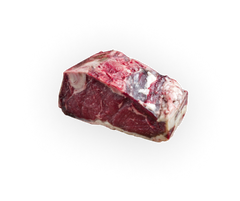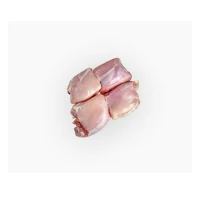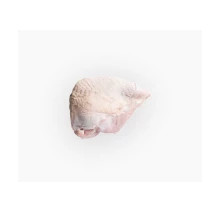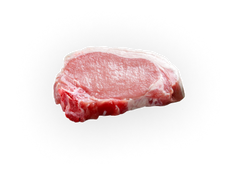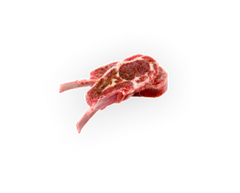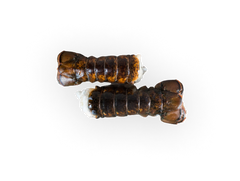Pork is a versatile and flavorful meat that holds a prominent place in cuisines worldwide. Whether you’re slow-cooking a pork shoulder, grilling chops, or roasting a tenderloin, knowing the different cuts of pork and how to use them can elevate your culinary game. In this blog post, we’ll explore the various cuts of pork, their characteristics, and the best ways to cook them.
Understanding Pork Cuts
Like beef, pork is divided into primal cuts, which are large sections of the pig that are then broken down into sub-primal and individual cuts. The main primal cuts of pork include:
- Shoulder (Boston Butt and Picnic Shoulder)
- Loin
- Belly
- Leg (Ham)
- Ribs
Each of these primal cuts offers a range of sub-cuts, each suited for different cooking methods and culinary applications.
1. Shoulder
The shoulder of the pig is a well-exercised area, making it a tougher cut of meat that benefits from slow-cooking methods. It’s divided into two main sub-cuts: the Boston butt and the picnic shoulder.
- Boston Butt (Pork Butt): Despite its name, the Boston butt comes from the upper part of the shoulder. It’s a well-marbled cut that’s perfect for slow cooking. This cut is ideal for pulled pork, where the meat is cooked until tender and then shredded. It’s also great for braising and roasting.
- Picnic Shoulder: This cut comes from the lower part of the shoulder and includes more connective tissue and bone. It’s slightly less tender than the Boston butt but still excellent for slow-cooked dishes. Picnic shoulder is often used to make pork roasts and is also the traditional cut used for making sausages.
Best Cooking Methods: Slow-cooking, braising, roasting, smoking.
2. Loin
The loin is one of the most tender and versatile parts of the pig. It runs along the back of the pig from the shoulder to the leg and is divided into several sub-cuts.
- Pork Chops: Pork chops are cut from the loin and are one of the most popular cuts of pork. They can be bone-in or boneless and are excellent for grilling, pan-searing, or baking. Depending on the section of the loin they come from, chops can vary in tenderness and flavour.
- Pork Tenderloin: This is the most tender cut of pork, located along the inside of the ribcage. It’s a lean cut with a delicate flavour, making it ideal for quick cooking methods like grilling, roasting, or pan-searing. Because it’s so lean, it’s best not to overcook tenderloin, as it can become dry.
- Pork Loin Roast: This is a larger cut that can be bone-in or boneless. It’s perfect for roasting and can be seasoned in various ways to suit different flavour profiles. Pork loin roasts are great for feeding a crowd and can be sliced into thick, juicy servings.
Best Cooking Methods: Grilling, roasting, pan-searing, broiling.
3. Belly
The belly is a fatty, flavourful cut of pork that’s known for its rich taste and tender texture. It’s often used to make bacon, but there are other delicious ways to prepare this cut as well.
- Pork Belly: Pork belly is the cut used to make bacon but can also be cooked on its own. When roasted or braised, it becomes incredibly tender and flavourful. It’s a popular cut in many Asian cuisines, where it’s often braised in soy sauce, sugar, and spices. Roasted pork belly can have a crispy skin, making it a luxurious treat.
- Bacon: Cured and smoked pork belly becomes bacon, a beloved breakfast staple and a versatile ingredient in countless dishes. Whether you’re frying it up for breakfast, adding it to a sandwich, or crumbling it over a salad, bacon is a cut of pork that’s hard to beat.
Best Cooking Methods: Roasting, braising, frying.
4. Leg (Ham)
The leg, or ham, is a large cut from the back of the pig. It’s a lean cut that can be cured, smoked, or roasted. Ham is often associated with holiday meals, but it’s versatile enough to be used in various dishes.
- Fresh Ham: Fresh ham is uncured and unsmoked, offering a blank canvas for seasoning and cooking. It can be roasted whole for a large gathering or cut into smaller portions. The fresh ham benefits from long, slow cooking to keep it tender and juicy.
- Cured Ham: This is what most people think of when they hear "ham." It’s been cured and often smoked, giving it a distinctive flavour. Cured ham can be served cold in slices, baked, or even grilled. Spiral-cut hams are a popular choice for easy serving at holiday meals.
- Prosciutto: A type of dry-cured ham, prosciutto is usually served thinly sliced and uncooked. It’s often used in antipasto platters, wrapped around fruits or vegetables, or as a topping for pizzas and salads.
Best Cooking Methods: Roasting, baking, grilling.
5. Ribs
Pork ribs are a popular cut for grilling and barbecuing, known for their rich flavour and tender texture when cooked correctly. There are several types of pork ribs, each with its own characteristics.
- Baby Back Ribs: Cut from the top part of the ribcage, baby back ribs are shorter, meatier, and more tender than spare ribs. They’re ideal for grilling or slow-cooking, where the meat becomes tender and juicy. Baby back ribs are often coated in a dry rub and slow-cooked before being finished with a glaze or barbecue sauce.
- Spare Ribs: These come from the lower part of the ribcage and have more fat and connective tissue. Spare ribs are larger and less tender than baby back ribs but are full of flavour. They require longer cooking times and are perfect for slow-cooking methods like smoking or braising.
- St. Louis Style Ribs: These are spare ribs that have been trimmed to remove the cartilage, making them more uniform in shape and easier to cook. They’re a popular choice for barbecuing, as they offer a good balance of meat and fat.
Best Cooking Methods: Grilling, smoking, slow-cooking, braising.
Choosing the Right Cut of Pork
Selecting the right cut of pork depends on the dish you’re planning to prepare and the cooking method you intend to use. Tender cuts like the loin and tenderloin are best for quick-cooking methods, while tougher cuts like the shoulder and ribs benefit from slow cooking to break down the connective tissue and develop rich flavours.
Understanding the different cuts of pork can help you make informed decisions in the kitchen, ensuring that your dishes turn out perfectly every time. Whether you’re grilling, roasting, or slow-cooking, each cut offers unique flavours and textures that can be highlighted with the right cooking techniques. From the tenderloin to the pork shoulder, there’s a cut of pork for every occasion and culinary adventure. Happy cooking!
Shop Pork Variety Pack